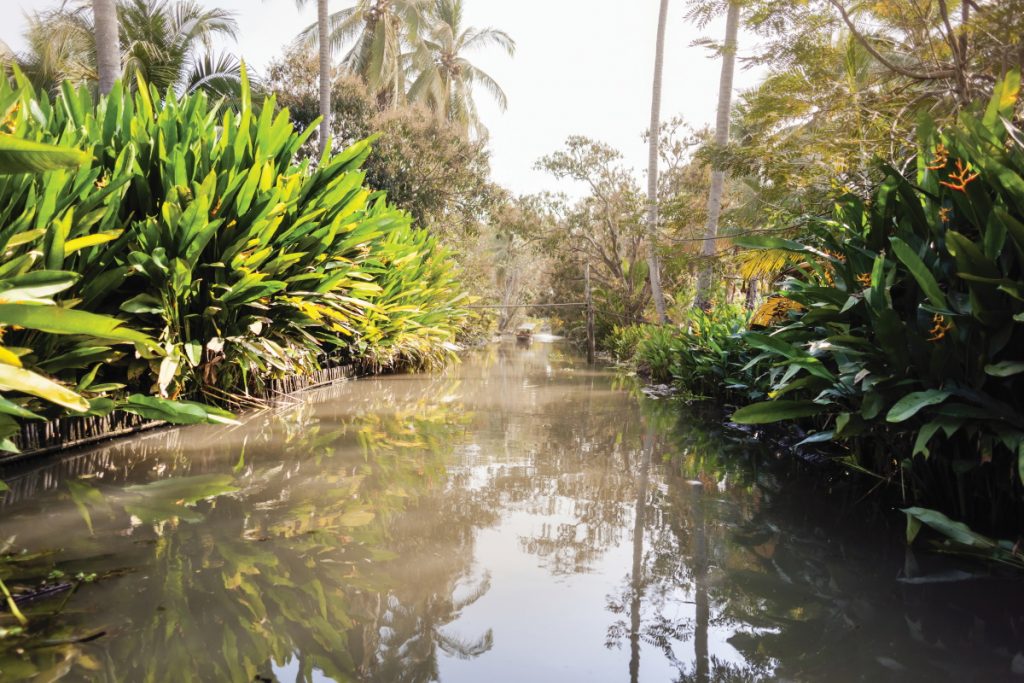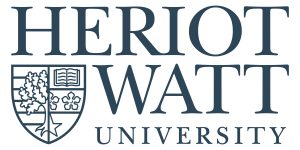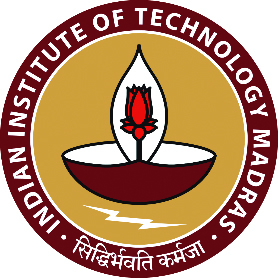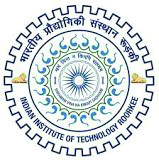What if we could develop a sensor that can detect pollutants like heavy metals?
Dr Helen Bridle is an associate professor at Heriot-Watt University in the UK. One of her current research projects is focused on developing novel sensors to explore the relationship between antimicrobial resistance and pollutants in India
Antimicrobial resistance (AMR) is when microorganisms, such as bacteria, fungi, parasites and viruses, evolve ways to survive treatments, including antibiotic, antiviral and antifungal medicines. The World Health Organization considers AMR to be an ‘increasingly serious threat to global public health that requires action across all government sectors and society’ and estimates that an additional $1.2 trillion will be spent on health every year by 2050 because of AMR.
Clearly, AMR is a significant issue that needs to be better understood so that researchers can find solutions in the near future. Dr Helen Bridle is based at Heriot-Watt University in the UK and is conducting research to explore the relationship between AMR and pollutants. One of the areas of her team’s focus is in India, which has one of the highest per capita use of antibiotics in the world.
WHY DOES INDIA RELY SO HEAVILY ON ANTIBIOTICS COMPARED TO OTHER COUNTRIES IN THE WORLD?
The more we use antibiotics, the more opportunities bacteria have to develop resistance. If people are not aware of this, they are unlikely to change their behaviour. A lack of understanding is one of the major factors behind increased incidence of AMR. “One of the main problems in India is the cheap unregulated access to antibiotics, e.g. over-the-counter sales with a prescription, which means that there is little control over whether antibiotics are used appropriately or at the correct dose,” explains Helen. “Other problems arise in the healthcare system, such as doctors receiving compensation for antibiotic prescriptions and relatively high levels of healthcare associated infection, which also contributes to the heavy usage of antibiotics in India.”
WHAT ARE HELEN AND HER TEAM HOPING TO UNDERSTAND IN THEIR RESEARCH?
It is known that water – particularly wastewater – plays a significant role in the spread and transfer of AMR, although there have been relatively few studies in this area to date. Helen’s research is designed to explore the relationship between AMR and pollutants, specifically heavy metals and additives such as triclosan (which is used in soap and toothpaste). Because these heavy metals and additives are also harmful to bacteria, the bacteria develop resistance mechanisms to them, which appear to bolster their resistance to antimicrobial treatments. Helen hopes to understand more about how these mechanisms work in the environment so that solutions can be found.
HOW ARE THE TEAM DETECTING AND MONITORING POLLUTANTS IN THE WATER?
The team is using novel sensor technologies to use in the field and explore the relationship between AMR and pollutants. These sensors will further our understanding in several ways. “Low-cost easy-to-use sensors will enable a greater degree of monitoring and detailed case studies to understand how the presence of co-selectors of resistance, such as pollutants like heavy metals and additives, impact on antibiotic resistance in the water environment,” says Helen. “Once we have improved our understanding of these subjects, it will enable policymakers and water companies to design effective interventions.”
HOW WILL THE SENSORS WORK?
The sensors that the team at Heriot-Watt University are developing will target the AMR genes in a water sample. In order to do this, the system needs to extract DNA from bacteria found in the water and then identify the specific sequences that are known to be associated with AMR. “We place recognition molecules on the sensor surface and when they are exposed to DNA, binding takes place,” explains Helen. “We can then measure the binding that enables us to check water quality without the need to access specialised lab facilities.”
It is hoped that the technology could one day be used by pollution control boards in India and around the world.
WHEN WILL THE SENSORS BE READY TO BE USED IN THE FIELD?
The project is already well underway and Helen’s colleagues in India have started regularly monitoring different sites. They have identified which pollutants are typically found in different locations and the AMR genes that are most prevalent. This has demonstrated the effectiveness of the research, although more work needs to be done before it can be fully rolled out.
The team hopes to be testing prototype systems and comparing them with existing techniques within the next year. Ultimately, by understanding the relationship between AMR and pollutants, solutions and preventive measures can be developed. Helen’s project is an important step in a global move toward minimising AMR, which could save trillions of dollars and – more importantly – countless lives around the world.
 DR HELEN BRIDLE
DR HELEN BRIDLE
Associate Professor, School of Engineering and Physical Sciences, Heriot-Watt University, UK
FIELD OF RESEARCH: Engineering and Physical Sciences
RESEARCH PROJECT: Helen’s work is concerned with developing novel sensor technologies to explore the relationship between antimicrobial resistance (AMR) and pollutants. The findings could help tackle the significant AMR that is linked to India’s water quality issues.
FUNDERS: UKRI
ABOUT ENGINEERING AND PHYSICAL SCIENCES
Engineering and physical sciences is an extraordinarily broad field of research, encompassing fields as varied as manufacturing, mathematics, advanced materials, chemistry, healthcare technologies and structural engineering. Students of engineering and physical sciences will build the skills, knowledge and, eventually, experience necessary to address scientific and technological challenges around the world.
HOW WOULD HELEN DESCRIBE THE PHYSICAL SCIENCES AND ITS LINKS TO ENGINEERING AT HERIOT-WATT?
In Helen’s current investigations, the knowledge required within the physical sciences ranges from the very small, such as the behaviour of molecules, through to the extremely large, such as modelling pollution spread and interactions in bodies of water. One definition of the physical sciences is studying non-living things, but within that there are so many different topics, that it is difficult to provide an all-encompassing definition. However, irrespective of which particular field researchers within the physical sciences find themselves within, it is critical to understand the fundamentals of how things work. At Heriot-Watt, there is a dedicated physical sciences and engineering department, which encourages experts in different fields to come together and tackle various challenges. “In our sensor development work, we realised we didn’t have enough knowledge about the chemistry of putting a specific molecule on the sensor surface to reach our target,” explains Helen. “So, we looked within the department and found a chemist who was able to help us.” Such interactions demonstrate the benefits of fostering collaboration, and physical sciences and engineering departments are highly collaborative.
Reference
https://doi.org/10.33424/FUTURUM56
It is known that water – particularly wastewater – plays a significant role in the spread and transfer of antimicrobial resistance
,According to the Organisation for Economic Co-operation and Development (OECD), only Luxembourg spends more than the US on education. However, the US also ranks 5th from bottom among OECD nations in terms of its poverty gap. This has resulted in large numbers of students failing to have the mathematics and chemistry knowledge that is often required to embark on an academic career in the sciences.
Of course, there are many complex reasons for students having gaps in their knowledge and not all of the issues are related to poverty (although many are). Students from traditionally underrepresented groups, such as racial/ethnic minorities, first-generation college students, LGBTQ+ students, students with disabilities and students from lower socio-economic households, often face unique challenges that can make studying more difficult. For instance, the state of New Mexico is a ‘minority majority’ state, meaning that Hispanics and native Americans outnumber the non-Hispanic white population, but students from these groups are likely to have been raised with fewer monetary resources.
Many Hispanic students come from families that still speak Spanish at home, and may be the first members of their family to attend college. This can result in families not knowing how best to support their children or how expectations in college differ from those in elementary and high school. Then there is the fact that underrepresented students often do more hours of paid work per week in addition to going to school – this can make it more difficult to take part in extra-curricular activities, get additional tutoring or join clubs.
Complicating all of these factors, many students graduate from high school without having mastered reading, writing and numeracy at the level expected by many college professors. So, for these students to be expected to already have a firm grasp of chemistry, biology, mathematics and other scientific subjects is often unrealistic. Dr April Ulery, based at New Mexico State University (NMSU), leads a team in “Raising the Gates”, with the aim of helping underrepresented students master key foundational concepts in mathematics and chemistry as a precursor to upper level work in various fields. As a soil scientist, April is passionate about helping students successfully complete their studies in the agricultural sciences.
WHY ARE MATHEMATICS AND CHEMISTRY SO IMPORTANT TO THE STUDY OF AGRICULTURAL SCIENCES?
Agriculture can be thought of as similar in principle to cooking, at least in terms of reactions and changes from one form or state to another. April explains: “Plant growth requires nutrients in certain amounts and forms, and agronomists (a fancy word for anyone working on crop production and soil management) need to be able to measure those nutrients and calculate how much is available to plants.” Understanding these processes is important. “There will always be employees who just follow instructions, just like some people who simply follow a recipe, but they won’t know how to ‘trouble-shoot’ when something goes wrong or improvise if they are missing something.”
CAN STUDENTS STILL STUDY AGRICULTURAL SCIENCES IF MATHEMATICS AND CHEMISTRY ARE NOT THEIR STRONG POINTS?
Yes, of course! There are many fields of agricultural science and a wide variety of jobs that require various kinds of knowledge. What April and her team want to emphasise is that agriculture is based in science, and if you want to work within the field, you should be aware of the science, even if you are not a chemist or mathematician. Many students involved in Raising the Gates may only go as far as basic chemistry and mathematics – it is all about having enough of a grasp of the subjects to use them as and when required. A little knowledge can go a long way and who knows – perhaps an introduction to the subjects could spark an interest that leads to a new career path!
WHAT TENDS TO HAPPEN WHEN STUDENTS FAIL TO CLOSE GAPS IN THEIR MATHEMATICS AND CHEMISTRY KNOWLEDGE?
The poverty gap in the US means that the separation between those who get what they need and those who don’t is expanding. NMSU’s Raising the Gates project is an attempt to ‘level the playing field’ by offering online learning tools that everyone can access. “There is still a problem that underrepresented students are less likely to have personal computers they can use to go online and use digital learning tools,” says April. “We often mistakenly believe that today’s students are computer savvy, but as teachers, we have to spend time with them navigating the massive amounts of information available to them on the internet.”
The goals of the Raising the Gates project have now been completed, and more than fifteen educational resources have been made
available online for free. It’s important to stress that most of these resources can also be accessed via smartphones, which makes it easier for students who might not have ready access to a computer. Moreover, the team continues to create educational materials through other initiatives, so keep checking www.scienceofagriculture.com for new information.
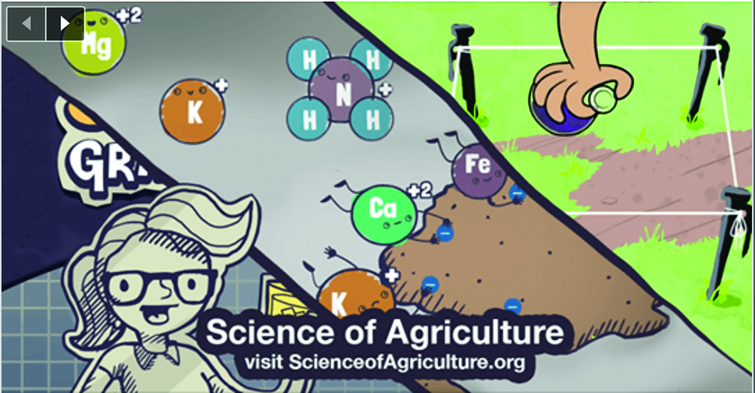
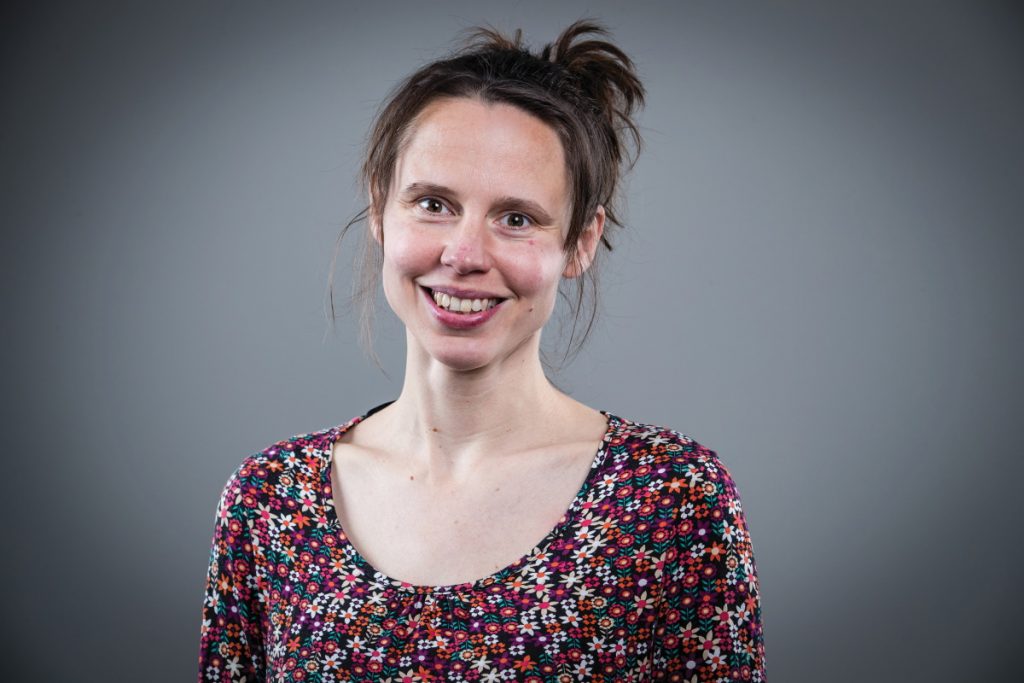 DR HELEN BRIDLE
DR HELEN BRIDLEAssociate Professor, School of Engineering and Physical Sciences, Heriot-Watt University, UK
FIELD OF RESEARCH: Engineering and Physical Sciences
RESEARCH PROJECT: Helen’s work is concerned with developing novel sensor technologies to explore the relationship between antimicrobial resistance (AMR) and pollutants. The findings could help tackle the significant AMR that is linked to India’s water quality issues.
FUNDERS: UKRI
ABOUT ENGINEERING AND PHYSICAL SCIENCES
Engineering and physical sciences is an extraordinarily broad field of research, encompassing fields as varied as manufacturing, mathematics, advanced materials, chemistry, healthcare technologies and structural engineering. Students of engineering and physical sciences will build the skills, knowledge and, eventually, experience necessary to address scientific and technological challenges around the world.
HOW WOULD HELEN DESCRIBE THE PHYSICAL SCIENCES AND ITS LINKS TO ENGINEERING AT HERIOT-WATT?
In Helen’s current investigations, the knowledge required within the physical sciences ranges from the very small, such as the behaviour of molecules, through to the extremely large, such as modelling pollution spread and interactions in bodies of water. One definition of the physical sciences is studying non-living things, but within that there are so many different topics, that it is difficult to provide an all-encompassing definition. However, irrespective of which particular field researchers within the physical sciences find themselves within, it is critical to understand the fundamentals of how things work. At Heriot-Watt, there is a dedicated physical sciences and engineering department, which encourages experts in different fields to come together and tackle various challenges. “In our sensor development work, we realised we didn’t have enough knowledge about the chemistry of putting a specific molecule on the sensor surface to reach our target,” explains Helen. “So, we looked within the department and found a chemist who was able to help us.” Such interactions demonstrate the benefits of fostering collaboration, and physical sciences and engineering departments are highly collaborative.
WHAT WOULD HELEN SAY TO PEOPLE WHO BELIEVE THAT ENGINEERING AND THE PHYSICAL SCIENCES ARE PRIMARILY SUBJECTS FOR BOYS?
Helen is aware of how entrenched such stereotypes can be in our society, which is why she is currently part of a project involving 3-7 year olds that attempts to change the misconception that engineering and the physical sciences are mainly for boys. “All the evidence shows girls are just as capable as boys in science subjects and achieve as well in exams,” says Helen. “Studies also show a more diverse workforce produces better outcomes – it would be so great if we could get away from these gendered ideas around careers/subjects.”
HOW TO BECOME AN ENGINEER AND/ OR A PHYSICAL SCIENTIST
• There are many opportunities in the field, especially engineering where Helen says there is a huge skills shortage with employers. By studying hard and acquiring the relevant skills, you should have no problem finding an opportunity that is suited to your specific interests.
• Tomorrow’s Engineers is a huge resource dedicated to the field. We encourage you to look around the site at your own leisure: https://www.tomorrowsengineers.org.uk.
It is jam-packed with useful information and activities to get you excited about the vast range of careers in engineering.
PATHWAY FROM SCHOOL TO ENGINEERING AND/OR PHYSICAL SCIENCES
Helen highly recommends studying mathematics at school and college to become well-versed in the subject by the time you get to university. You should also study at least one other physical science, depending on the specific type of physical sciences or engineering you might want to do in the future.
For instance, if you are interested in chemical engineering, then chemistry would be the most obvious route. You can find out more here: https://nationalcareers.service.gov.uk/job-profiles/chemical-engineer.
On the other hand, you could investigate potential alternatives to university, such as the apprenticeship route. The UK government has a website dedicated to future engineers which contains a wealth of information on the possibilities out there: https://www.engineering.gov.uk/future-engineers.
HOW DID DR HELEN BRIDLE BECOME AN ENGINEER?
DID YOU ALWAYS KNOW YOU WANTED TO BE A SCIENTIST WHEN YOU WERE YOUNGER?
No, I didn’t know anyone who was a scientist, so I didn’t really know it was a career option. In fact, I probably wasn’t totally sure I wanted to be a scientist until I tried some other career options after my PhD and realised I missed the creativity and freedom to explore interesting ideas that scientific research offers.
YOU HAVE A-LEVELS IN CHEMISTRY, MATHS, FRENCH AND ECONOMICS. WHAT MADE YOU DECIDE TO STUDY NATURAL SCIENCES AT UNIVERSITY?
I didn’t have a career plan in mind and struggled to choose just one topic so I decided natural sciences would be a great way to study a range of subjects. Some of those I chose were favourites, like chemistry, while others were totally new to me, like philosophy.
YOU THEN WENT ON TO STUDY FOR A MASTER’S IN ADVANCED MATERIALS. WOULD YOU SAY THAT YOU PREFER TO SEE WHERE YOUR STUDIES/CAREER TAKE YOU, AND TO TAKE OPPORTUNITIES AS THEY ARISE, OR DO YOU LIKE TO HAVE A PLAN IN PLACE?
I love making plans, but they do tend to get revised an awful lot! I believe you should always take advantage of opportunities, such as the summer research placement in Switzerland that first got me into the idea of doing a PhD. This is similar, really, to doing science – I make all sorts of plans but then experiments reveal something different that is interesting to follow up on – or conversations lead me to discover new topics that the work I do could contribute to. Also, while my career is important to me, other things, particularly sport when I was younger and now my family, have also driven career decisions, like moving to Sweden for my Advanced Materials MSc.
AS A FEMALE WORKING IN THE PHYSICAL SCIENCES AND ENGINEERING, HAVE YOU EVER FELT SLIGHTLY INTIMIDATED OR AT A DISADVANTAGE?
During my undergraduate there was a fairly even gender balance, but there were fewer girls on my MSc. Now, the research institute I work in is also well-balanced, although that might be because the focus is on engineering interfacing with the life sciences/biology, and I know in other subjects there is a lower representation of women. I’ve definitely had times when I’ve felt disadvantaged when starting a family but, actually, I’m not sure this is a problem confined to the physical sciences and engineering – in fact Heriot-Watt has a lot of family-friendly policies.
WHAT DO YOU LOVE ABOUT YOUR WORK?
What I love the most is the freedom to explore things I enjoy and find interesting. I also love that I’m constantly learning new things. Other things I find rewarding are the creativity, the teamwork and seeing the positive impact my work can have on improving lives.
HELEN’S TOP TIPS
1 Always be open to opportunities as and when they present themselves. You never know what is around the corner, so grabbing opportunities with both hands could take you to places and in directions you might never have foreseen.
2 It is highly likely there will be possibilities to undertake summer projects or work experience placements – some of which are paid – in the sciences and engineering. These will help you progress and give you a real understanding of the areas you like and those you’re not so keen on.
3 Physical sciences and engineering offers so many different opportunities to be creative and come up with ideas to solve problems, work in teams, and develop theories, systems and products to help people. If that sounds like something you would like to do in your career, then this is the field for you!




